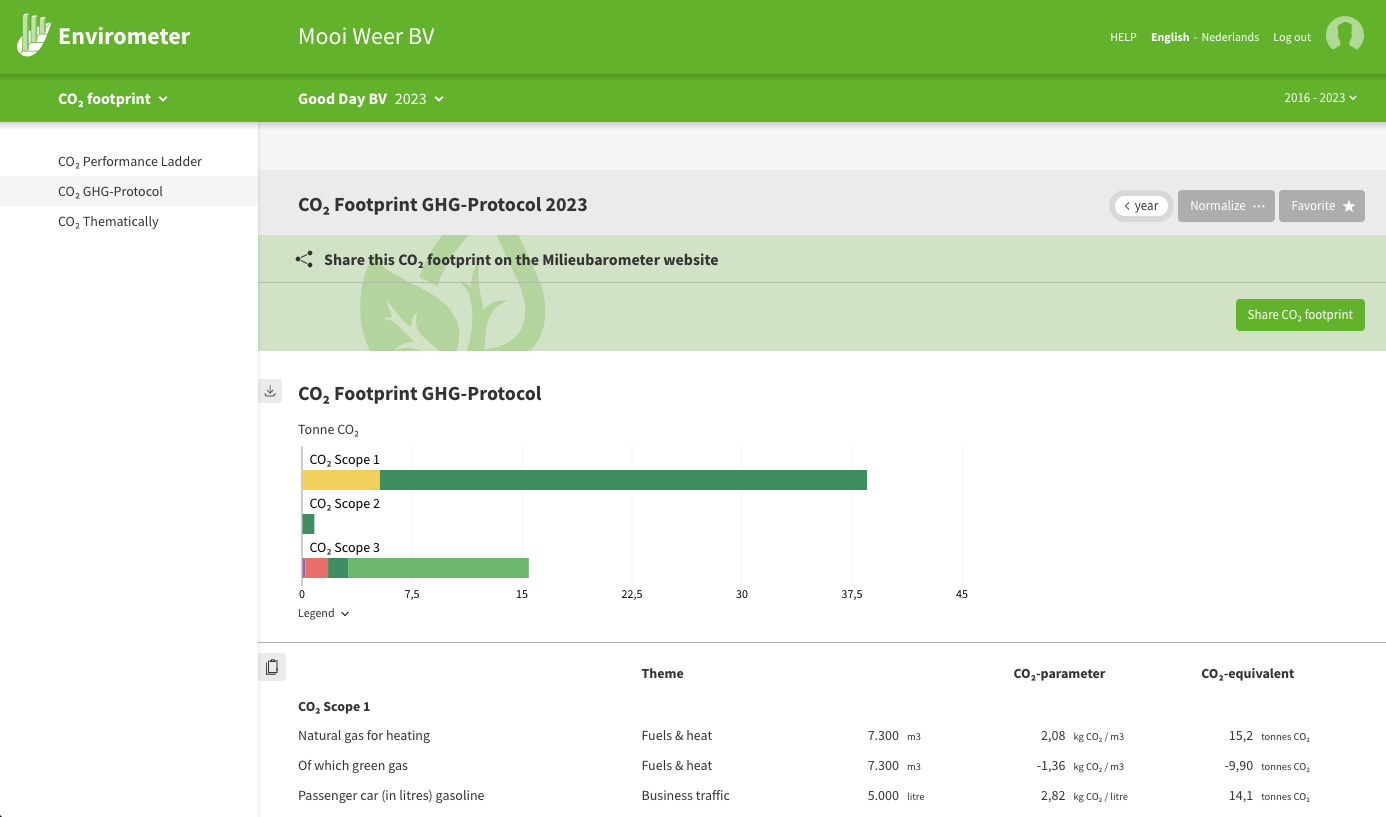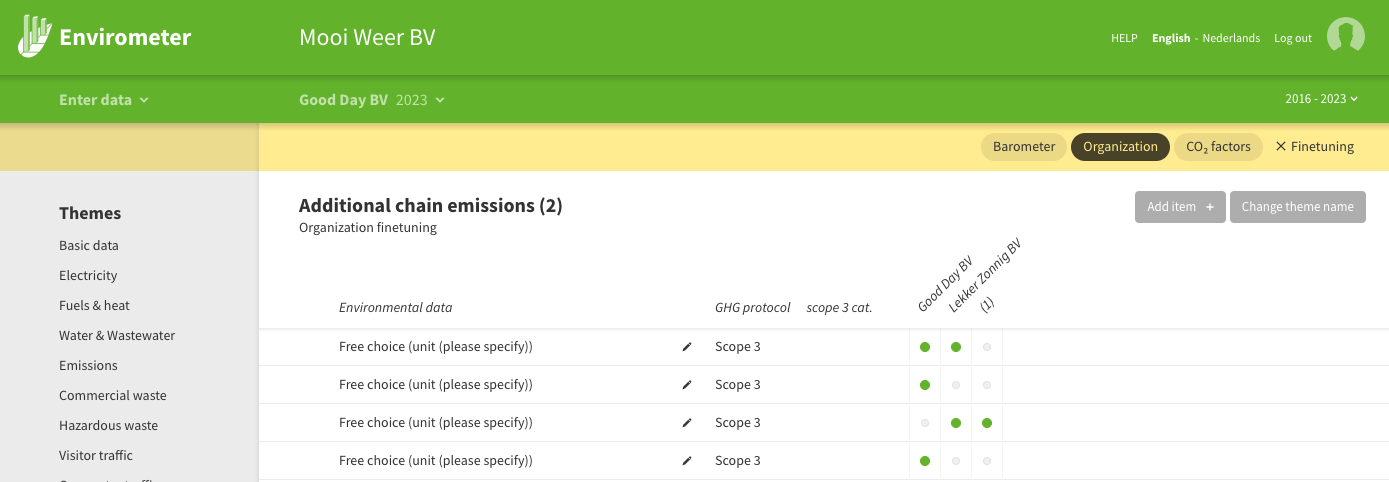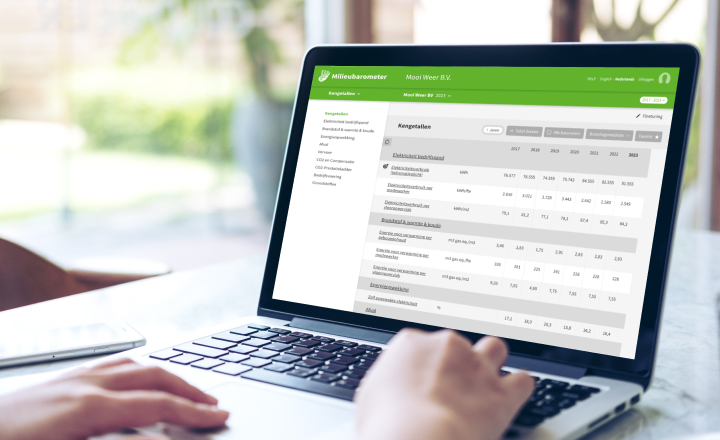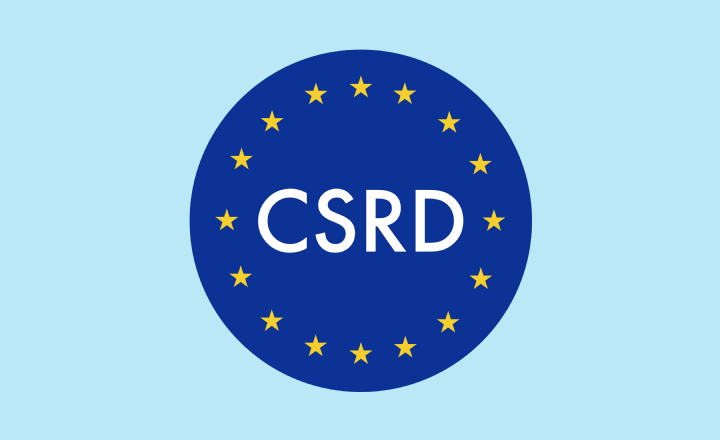New Scope 3 Features
More and more organizations are being asked to map their Scope 3 emissions in addition to Scope 1 and 2. With the new features of the Envirometer, you can more accurately input Scope 3 data and present the results in accordance with the guidelines of the GHG Protocol, the Corporate Sustainable Reporting Directive (CSRD), and the CO₂ Performance Ladder.

What is Scope 3?
Before we share more about the new features, we’d like to explain what Scope 3 entails. Scope 3 covers the indirect CO₂ emissions of an organization, such as purchased products and outsourced work. To determine their impact, an organization’s consumption data is multiplied by CO₂ factors.
These factors are based on the entire life cycle of products, from the extraction of raw materials to the disposal of the product. These CO₂ factors are calculated in life cycle assessments (LCAs) and collected in databases containing environmental information about products, such as the National Environmental Database and Ecoinvent. The calculated CO₂ factors can then be added to the Envirometer, allowing you to gain insight into your Scope 3 impact.
What new Scope 3 features have been added?
New: Chart for Scope 1-2-3

This chart provides an at-a-glance view of the Scope 1-2-3 ratio of your footprint. You can select the scope classification for CSRD and GHG Protocol or for the CO₂ Performance Ladder certificate.
New: Breakdown into 15 GHG Categories for Scope 3

In the CO₂ footprint table for the GHG Protocol, you can now see which category each Scope 3 item belongs to. Reporting by GHG category is mandatory for CSRD reporting for larger companies.
Improved: Add Scope 3 Items Yourself

There are several “fixed” Scope 3 items in the Envirometer, to which standardized CO₂ emission factors are linked. These include commuting, water and wastewater, visitor traffic, and outsourced transport.
To complete a Scope 3 calculation, you can add sector- and company-specific items, such as the raw materials used and their CO₂ emissions. You’ll need to add CO₂ factors for these items yourself. This option has been available in the Envirometer for some time, but since the latest update, it has become more user-friendly and comprehensive.
When Should I Start Working on Scope 3?
The goal of a Scope 3 analysis is to gain an understanding of the scale of CO₂ emissions throughout the value chain; it is not meant to be a baseline measurement. Once you know where the greatest impact lies, you can set focal points for CO₂ reduction in collaboration with value chain partners and/or through sustainable procurement.
Mapping Scope 3 can be quite a task, so Stimular’s advice remains to first focus on mapping Scope 1 and 2 when you begin monitoring. In the first year of CSRD reporting, Scope 3 emissions do not need to be fully quantified. However, companies are required to report on their efforts to quantify these emissions in the following years.
Are you not yet familiar with the scope classification of CO₂ footprinting according to the GHG Protocol? Learn more about the background in the Stimular Guide to Climate-Neutral Entrepreneurship.
Would you like to learn more about our tool?
Get started with the Envirometer
Want to get started immediately? No problem! Take out a subscription today and get started by filling in your details.


20- february-2025 The annual update of the CO₂ emission factors took place at the beginning of February 2025, on www.co2emissionsfactors.nl. All changes were implemented in the Envirometer on February 20. It is useful for Envirometer users to know the most important changes.

The reporting of greenhouse gas emissions and energy consumption in the Envirometer complies with the Greenhouse Gas (GHG) Protocol and the European Sustainability Reporting Standards (ESRS) requirements of the Corporate Sustainability Reporting Directive (CSRD). A key component is the calculation of Scope 2 emissions using two methods: the location-based and the market-based approach.

This year, the new environmental prices that CE Delft published in 2023 have been implemented in the Envirometer. This way we ensure that the tool remains up to date with developments in science and politics. But why is this important? And what exactly are the environmental prices?